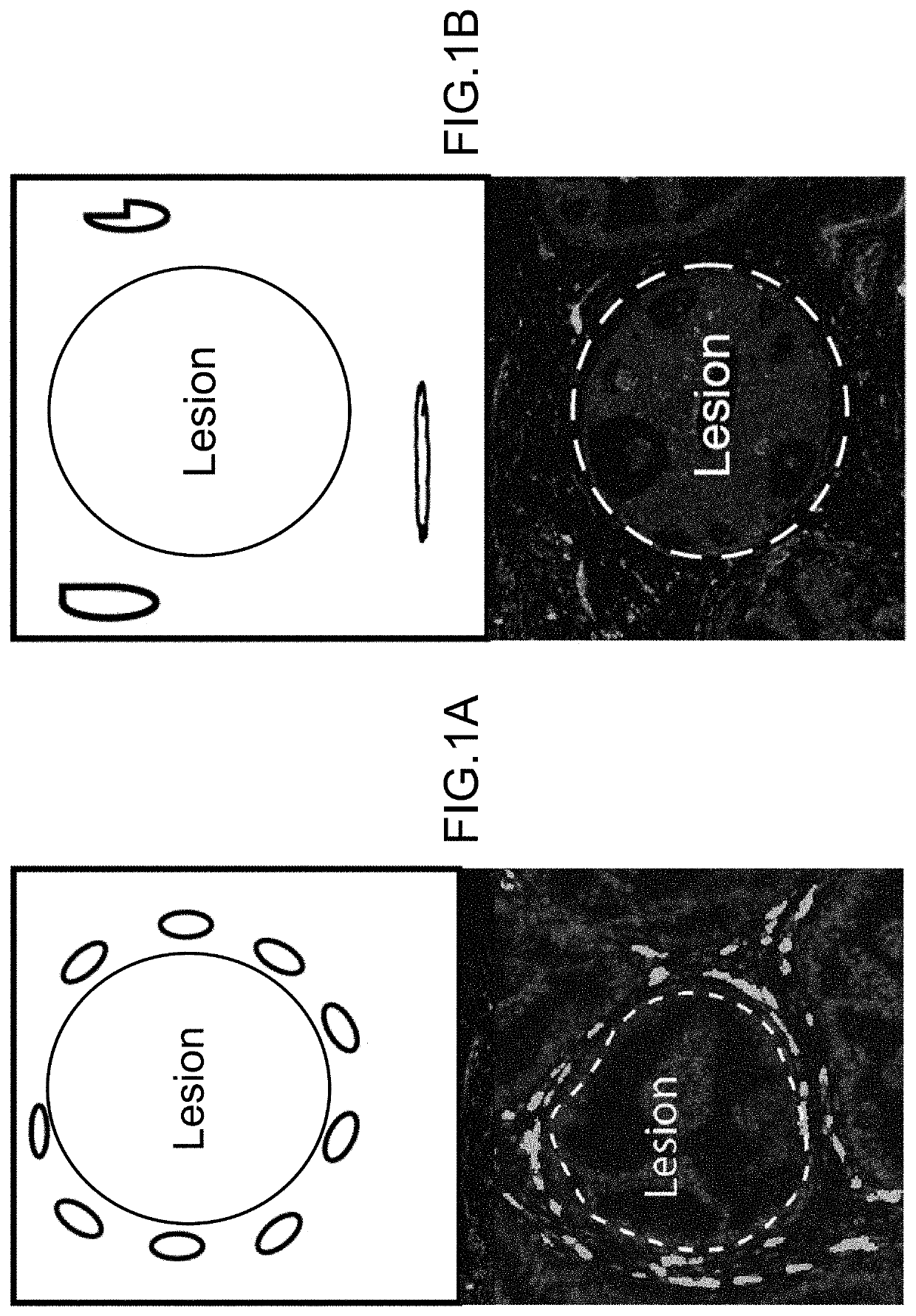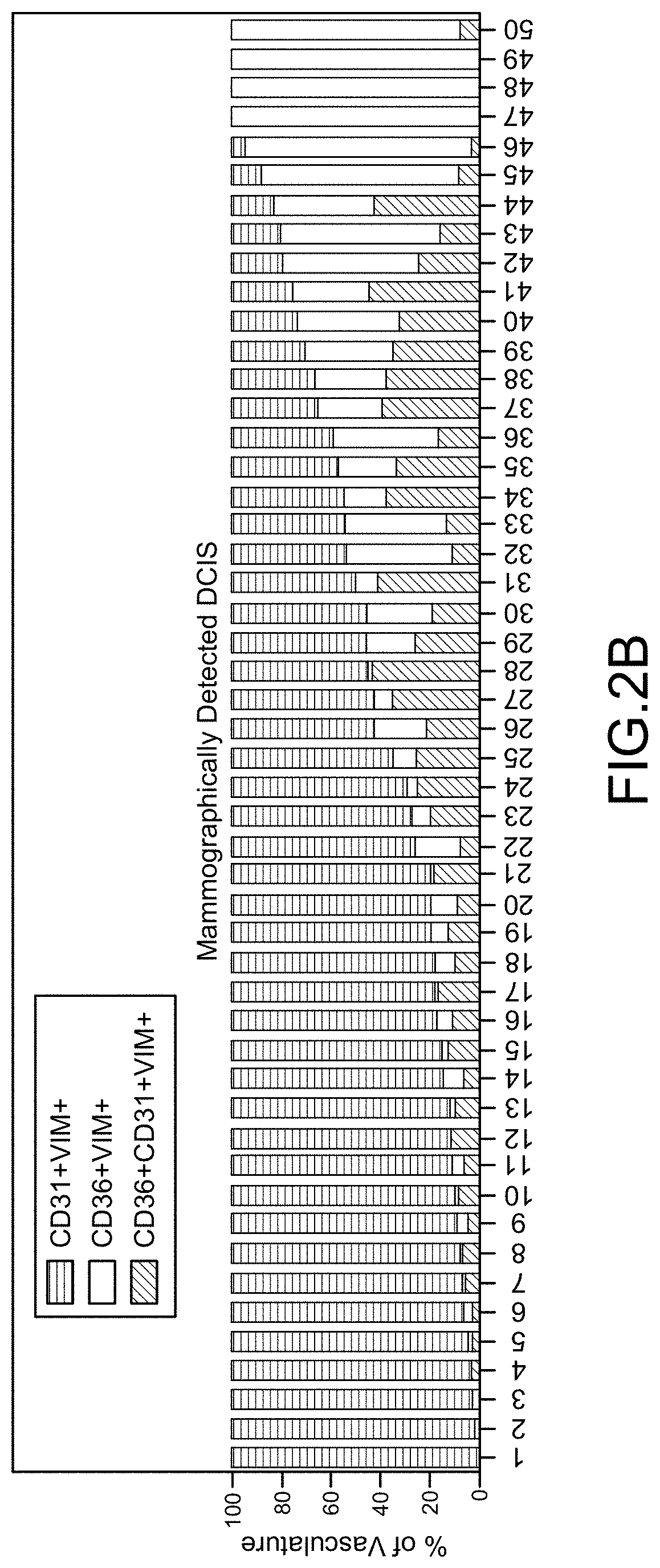Cancer Progression Risk Assessment by Microvascular Phenotype
a microvascular and risk assessment technology, applied in the field of cancer progression risk assessment by microvascular phenotype, can solve the problems of reducing the risk of progression of invasive breast cancer in women diagnosed with dcis, presenting a treatment dilemma for precancerous lesions, and a relatively small proportion of subjects with precancerous lesions actually developing potentially fatal invasive cancer, etc., to achieve the effect of reducing the risk of progression and increasing the risk of progression
- Summary
- Abstract
- Description
- Claims
- Application Information
AI Technical Summary
Benefits of technology
Problems solved by technology
Method used
Image
Examples
example 1
g Risk of Subsequent Invasive Events in Women Diagnosed with DCIS by Assessing Vascular Phenotypes
[0084]Ductal carcinoma in situ (DCIS) is a heterogeneous group of non-invasive breast lesions commonly detected by screening mammography. A small proportion of women diagnosed with DCIS subsequently develop potentially lethal invasive breast cancer (IBC). Ductal carcinoma in situ (DCIS) is the accumulation of neoplastic cells within the ducto-lobular system of the breast. Lack of invasion into the adjacent stroma is the key histological feature differentiating DCIS from invasive breast cancer (IBC). To date, there is currently insufficient data on the clonal relationship between primary DCIS and subsequent IBC to estimate the proportion of DCIS lesions actually capable of progressing to IBC, if left untreated.
[0085]DCIS currently accounts for 25-30% of all breast cancer diagnoses (60,000-70,000 cases per year in USA). DCIS is nearly universally treated by mastectomy or lumpectomy follow...
example 2
culature Abundance in Colon
[0102]The abundance of CD36-expressing vasculature was measured in stromal tissue adjacent to healthy colon epithelia (5 subject), in stromal tissue adjacent to IBD lesions (9 subjects), and in stromal tissue adjacent to invasive colon cancer tumors (8 subjects). The abundance of CD36-expressing vasculature (CD36+ / CD31−+CD36+ / CD31+) was measured as the percentage of all vasculature [CD36+ / CD31−+CD36+ / CD31++CD36− / CD31+]. The percentage of CD36-expressing vasculature was high in healthy tissues (˜70-95%) and substantially lower in stromal tissue adjacent to invasive colon tumors (˜30% or lower in seven of eight subjects). The abundance of CD36-expressing vasculature varied in stromal tissues surrounding IBD lesions. These results suggest repression of CD36-expressing vasculature in the progression from healthy to cancerous tissue.
PUM
| Property | Measurement | Unit |
|---|---|---|
| threshold value | aaaaa | aaaaa |
| threshold value | aaaaa | aaaaa |
| threshold | aaaaa | aaaaa |
Abstract
Description
Claims
Application Information
 Login to View More
Login to View More - R&D
- Intellectual Property
- Life Sciences
- Materials
- Tech Scout
- Unparalleled Data Quality
- Higher Quality Content
- 60% Fewer Hallucinations
Browse by: Latest US Patents, China's latest patents, Technical Efficacy Thesaurus, Application Domain, Technology Topic, Popular Technical Reports.
© 2025 PatSnap. All rights reserved.Legal|Privacy policy|Modern Slavery Act Transparency Statement|Sitemap|About US| Contact US: help@patsnap.com



